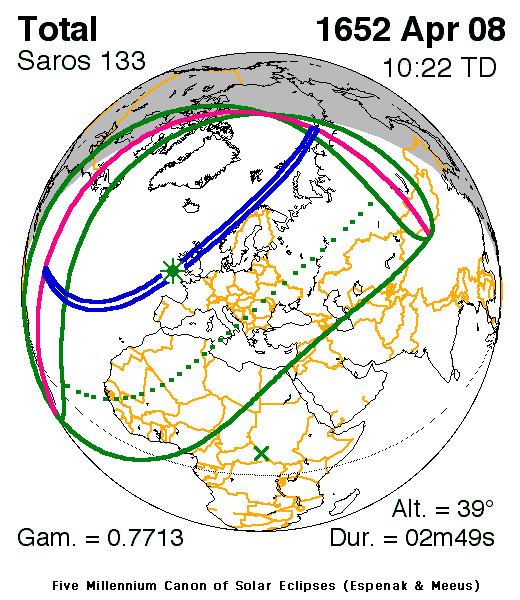Nature Total Magnitude 1.0412 Max. width of band 213 km (132 mi) Start date April 8, 1652 | Gamma 0.7713 Duration 169 sec (2 m 49 s) Greatest eclipse 10:22:28 | |
 | ||
A total solar eclipse occurred on April 8, 1652. A solar eclipse occurs when the Moon passes between Earth and the Sun, thereby totally or partly obscuring the image of the Sun for a viewer on Earth. A total solar eclipse occurs when the Moon's apparent diameter is larger than the Sun's, blocking all direct sunlight, turning day into darkness. Totality occurs in a narrow path across Earth's surface, with the partial solar eclipse visible over a surrounding region thousands of kilometres wide. The path of totality intersected the United Kingdom, as well as passing just off the west coast of Norway.
Contents
Observations
Observed from Carrickfergus, Scotland, Dr. Wyberg wrote:
"[The Sun was reduced] to a very slender crescent of light, the Moon all at once threw herself within the margin of the solar disc with such agility that she seemed to revolve like an upper millstone, affording a pleasant spectacle of rotatory motion."Because this eclipse occurred on a Monday that day became popularly known as Mirk Monday.
Related eclipses
It is a part of solar Saros 133.
